|
In February, the Tucson YAVs were asked to lead a worship service. The topic for that Sunday was “Dismantling Structural Racism.” I felt vastly under prepared and uncomfortable to be standing in front of people talking about racism. But as I thought of what I wanted to say and worked with fellow YAVs to flesh out the service, I chose to embrace this discomfort.
I am still feeling discomfort. Talking about race is hard and I am constantly worried I am going to mess up. Race discussions force me to face the systematic injustice happening all around me every day. It makes me not be able to ignore the pain, fear, injustice that is what our society is built upon. Below is what I wrote and for that sermon on Dismantling Structural Racism. It feels especially pressing this week as we have heard of another black man being murdered by police and the protests that turned to riots because of more police violence. My heart hurts. I hope you read this. But before you continue reading, I have one request. If you have yet to listen to the voice of a black person on the current happenings of police brutality and protests, close my blog right now and read from someone who lives under the oppression of white supremacy every second of every day. Black voices matter more than mine. This video is a great place to start. ___________________________________________________ It is easy to question Why should we be so wrapped up in these issues of racism? There are other issues to fight for as well. So why is Dismantling Structural Racism a key part of the Matthew 25 vision? Why should we care more about issues of race than issues of the environment, or women’s rights or LGBTQ inclusion? While it can be easy to fall into these ideas, I have to remind myself that racial discrimination is much farther reaching than other forms of prejudice. All others are impacted by race and ideas of white supremacy. For example, I am a woman. I am queer. Both of these identities have given me my own experiences of prejudice. But I carry both of these identities with the intersection of white skin, which carries many privileges independently of the others. As a woman, I experience all the way too common things like getting nervous going places on my own at night or anxiety about being in solo in close proximity with a male stranger. I get told how to dress and act and judged for not falling into the mold that our white supremacy society set for us. Since working at CHRPA, my womanhood has been an ever more pressing issue because I am working in a male-dominated field where strangers frequently tell me their unsolicited opinions on women doing manual labor. Additionally, while home for Christmas, I had to have a conversation with my grandmother to convince her that my daily physical work isn’t “ruining my ovaries” and hear her concerns about me not being able to have a family in the future. One of my brothers, who also does a labor intensive job, has never had to be questioned on if he will still be able to have a family later in life due to his work now. While I am able to find some of these encounters and conversations amusing in hindsight, I hate that I have to invest time and energy navigating people’s opinions of my identity. Time an energy that straight people and men get to spend in other ways if they choose to. I am tired of educating people about queer and women’s rights, just like many other queers and women are. The weight of this exhaustion really hit me when I was questioning why we were being asked to talk about race today. Our YAV coordinator Alison responded by asking us “well who do you think should be talking about it?” I didn’t have an answer. Someone more qualified? Someone who knows what they are talking about? I certainly don’t know what I am talking about. As a white person, I benefit from so many privileges. I don’t have to put in extra time and energy to wonder how my race plays a role in my everyday life and interactions. I don’t have to think daily about ways to talk about white privilege. This energy that we don’t have to spend on those thoughts and conversations allow us the privilege to devote our time and energy to other things. We get to choose how to use this time. One option is to give that energy to fighting the racist structures all around us. To up ending white supremacy. To having the hard conversations because non-white people have been doing all the work for far too long. It is time we join them. Not to do it for them, but to be present with them in this struggle. Additionally, our privilege gives us more power. We have more of a say as white people. That is how this system of white supremacy works. White people have more sway with elected officials and have a greater chance of being elected to those offices. White people can stand up against these systems with less of a fear of being attacked by law enforcement or imprisoned. White people speaking up in a group is considered a protest while frequently black people speaking up in a group is considered a riot. There is a double standard and as white people we can use that to work toward ending structural racism. I don’t want that to be read as supporting the ideas of white saviorism. I don’t think that white people should be leading this fight. We are not able to lead the resistance when we don’t experience oppression. But we should be present, and using the stance that we have as people of privilege to advance the fight to more people. Similarly, I feel called by the idea of “doing for the least of these” as Jesus said. Just becasue I am queer and a woman, I dont’ get to step back from the issues of race by thinking that I have my own battles to fight. There is an intersectionality to oppression where I hold more privilege as a white woman than a black woman does. We both experience sexism but in vastly different ways. For example, while I do worry about my safety, I get to worry less about it than women of color. 4 out of 5 Indigenous women experience violence and they have a 10% greater chance of being murdered than the national average. Additionally, if I experience violence, I have a much higher chance of law enforcement actually caring than the murdered indigenous women do. This is a huge issue in our country that too many people aren’t talking about. If you don’t know about this crisis, I strongly encourage you to read more about it here. But these acts of violence, the difference in treatment between us as White people versus the treatment of Black, Indigenous, and people of color (BIPOC) isn’t how it is supposed to be. Ephesians 2 says: 14 For he himself is our peace, who has made the two groups one and has destroyed the barrier, the dividing wall of hostility, 15 by setting aside in his flesh the law with its commands and regulations. His purpose was to create in himself one new humanity out of the two, thus making peace. God makes things new. Our creator made us as one human body, one community. But the history of the human race has defiled the plan by our creator. If our goal as a church is to be like Christ, then we have to do this reconciling work too. I have spent the last couple weeks asking “Why are we talking about this at church? Why me? Am I qualified for this? Aren’t there better people to be talking about this than me? What do I know?” But if not us then who? Who should be talking about this? Cause BIPOC are tired of talking about this. They have been fighting this oppression from white people for centuries. They think about white supremacy every day. Because they can’t not think about it. As white people, we are comfortable sitting in the world that has been built to favor white skin. To be a Church engaged in the world and to reconcile all human beings as God’s creation, we need to get comfortable challenging the ideas of white supremacy. Comfortable speaking up for the oppressed. Because if we aren’t speaking up for the oppressed, then we are standing in silence with the oppressors, and I no longer feel that I can stand for that as a person of faith. Why us? Why are we as white people talking about this? Because we have the power, time, and energy to do something about it. So we need to be talking to our neighbors, our representatives, our families about these issues of injustice against our black and brown siblings in Christ. We need to be sitting and learning from black, indigenous and people of color. Most importantly, we need to do something. Something to make the reconciliation that Jesus called for a reality. _____________________________________________________ A good resource of where to start: 75 things white people can do for racial justice Feeling awkward about talking about race? Me too. Nadia Bolz Webber has good things to say about that.
0 Comments
You will get to a point one day, where this won’t be so hard, it won’t hurt so much.
This is what Margo Cowan, a woman who has been engaged with activism for over 45 years, told me as I walked her files into court last fall. It was my second week on the job, and in a plan to get to know me better, she asked how I liked my work with Keep Tucson Together. KTT is a new work placement for the TBYAVS, and it has been a lot of learning and growing for all involved. I went in knowing nothing about law or immigration. I also knew that I didn’t have the best boundaries when it came to work. That I have trouble separating areas of my life and not getting too focused on one thing that I forget other things around me. I knew going into, that this year was going to hold a lot of growth. Keep Tucson Together is an organization that strives to offer free legal services to undocumented families in Tucson that cannot afford a lawyer to represent them in immigration court. The organization started in 2011, helping people submit their DACA and citizenship applications. However, now, there is a growing need to defend people in deportation proceedings as cases that were closed 5 years ago are being reopened and more and more people are getting stopped for traffic violations and then deported. This year has brought me a constant awareness of the ways in which our government uses tactics of oppression to further instill racism fear into society. My first week on the job we discussed the importance of an A# or an alien #. The government refers to our clients not as people, but as aliens, and instead of going through the trouble of learning names, ICE assigns them #’s. My second week on the job, I attended my first Thursday night clinic and sat in on our team’s meetings with clients. I heard second hand through a translator the stories of people seeking political asylum, I heard of families whose son or sister or parent had gotten detained by Immigration and Customs Enforcement (ICE) because they weren’t wearing a seatbelt one afternoon and ICE was called because the driver didn’t have papers. The following Monday, I relived those stories again and again as I entered them into our database and then sent them by email to our lawyers and teams so that these folks could get help. Many emails came back with further questions, lawyers looking for more information that made this plea for asylum unique compared to the dozen that they heard earlier in the month. The first few emails, made me angry, why should it matter- why are we forcing people to relive their trauma’s? IF they were from Europe would we be needing as much information? When Margo told me at the end of my second week that I would one day build up a shell and that this work wouldn’t affect me, I didn’t believe her. How could I ever get used to these stories and become numb to all of the tears and panic that came into our office every day? In my first month with KTT I began to see through lawyer and volunteer interactions, through emails, the “numbness” that Margo was hinting at. However, I still wasn’t sure that becoming “numb” was possible for me. I did not see the value in it. Thirty-six weeks later, I am now beginning to unpack what she was saying that day. This numbness doesn’t mean the work no longer affects you, it’s that it doesn’t paralyze you. I began to understand that even though our lawyers and volunteers weren’t visibly distressed each time a new client’s story was heard, they still feel each one. Instead of getting upset and shutting down when I hear these stories, I now get angry when the 27th person comes to the clinic or calls us to explain their situation. I am angry because 27 people shouldn’t have to call in one day for a lawyer. They should not be sitting in a detention facility waiting to have their story heard. A story that 8 times out of ten, involves a loved one they know or themselves fleeing death threats after being kidnapped or harassed by a cartel. Two minutes before I got up to tell this story, I was replying to a comment on a Facebook post for the Justice for All campaign. I told you— it’s hard to put work aside! This campaign is fighting to create a public defenders office in Pima County strictly for folks in immigration court. To alleviate the workload that nonprofits like Keep Tucson Together are facing when taking on 700+ cases at a time. The saying, you have a right to an attorney and if you cannot afford one, one will be appointed to you, does not apply to non-citizens. Because in the eyes of Americans, if you are not a citizen you are not a person, you are an alien, why should you get a lawyer? I am channeling anger tonight because I have had to tell the 9th person on Facebook for the 27th time that to get here “legally” amounts to more than having money and waiting two weeks for a passport or visa. I am angry because no matter how many ways it gets said, some people still struggle to connect the dots. And it’s not their fault, the system that we play into has caused us to be this way, to feel this way- or really, to not feel at all. But, how can I share my thoughts about what I am learning at the border when people are too built into their systems to listen. What happens when everyone plays into this “numb” feeling and a person’s life becomes a case instead of a story. I now get angry instead of sad and in this current situation where KTT has 53 clients in ICE custody, in detention, awaiting infection, my blood is boiling and I challenge why more people’s do not. I am disgusted that our first question isn’t how can we help people who need help it’s, well are they here legally? When our second question isn’t how do we fix this, it’s how dangerous are these people? I am angry because I question how long social justice initiatives will have to keep fighting. I am angry now because some days, I wish I could live in Margo’s advice and be numb to the stories. To have this unawareness that friends, family, and Facebook strangers do. I am angry because as I am wishing for one day where I don’t have to be engulfed by work and immigration, I am also scared of becoming numb. It scares me to think that when this YAV year ends I will have the option not to think about the folks sitting in detention or being harassed by our government systems. It scares me to recognize the continuous battle in fighting the privilege to “numb out” and the challenge that comes with also taking time for self-care. As we approach week 44, the end of our YAV year, and possibly the end of my time in Tucson, I get scared of leaving all I have learned behind and turning back to “numbing out”. People’s stories should not have to go on display in order for us to understand their situation. Yet, I have been given the gift this year of true vulnerability in the clients I work with and a few friends I hold dear. Their vulnerability should not go unnoticed. They are “Rock Stars” as Margo often says– and in a world that is threatening to dim their light, their stories need to be heard. The lesson that this year has taught me and the feelings that I am left with are that we can’t numb out and get used to these stories. As tempting as it is, we can’t take the easy way out and avoid seeing these people as people. Because if we do that, the system won’t change, people won’t change. As scared as I am for this YAV year to end, that does not mean the learning ends. We live in a world that will always offer one more story. 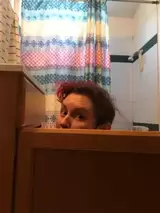 Toilet replacements are unpredictable. Sometimes it is simple, take one out, put one in, no worries. Other times there are many more steps such as repairing the floor. Or fixing the flange. Or replacing the water shut off valve. All of these involve many extra steps and materials Vernon, another CHRPA volunteer, and I embarked on a toilet replacement job one Thursday afternoon not knowing what we would find. Upon walking into the small bathroom, we were relieved to find that all seemed to be in good shape. This could be a simple replacement of the toilet, with no extra steps needed. I detached the existing toilet while Vernon brought the new one in from the van. In no time, we had the old one out and the new one set in place. I knelt over it to tighten the bowl to the floor. The left bolt was tight and the right one was almost there. I thought to myself “2 more turns of the nut should get it tight” but on that second turn, I heard an unexpected sound. “POP!” Oh no… The bolt on the right side had come loose under the toilet… to fix that required removing the toilet bowl, re-securing the bolt, and putting the toilet back on, hoping it worked the second time. Vernon’s experience and ingenuity helped us. He secured the bolt that had come loose with an extra washer. We put the toilet back in place. Vernon tightened the pesky bolt on the right as we held our breath, hoping this time it would work. It did! But as he tightened the bolt on the left, we heard that same, unwanted sound… “POP!” The bolt on the left had come loose. By this point the small bathroom was hot. Every minute that passed I seemed to notice more of how tiny the space was. We had been in there about an hour and a half. We were tired after a long week of repairs and very ready for the weekend to begin. But we couldn’t just leave it. So again we removed the toilet… Vernon put an extra washer on that bolt as well and we set the toilet back in its place for a third time. Vernon tightened the bolts while I crossed my fingers and prayed it would stay secure. Luckily, the third time really was the charm. Feeling grateful for those extra bolts, we got everything hooked up and running. As we cleaned up our tools, I felt frustrated by how long it took us to do that job. I was just happy it was done and I could get ice cream when I returned to the office, I grabbed the file out of the truck to get the client’s signature before leaving. Inside the house, I told them about the mishaps we encountered and explained why I had needed to go in and out of the house about five times to grab more tools and supplies from the truck. Our client laughed with me and then told me. “My 4 year old granddaughter who is playing in the other room saw you coming in and out. She said ‘how can a girl be fixing the toilet?’ with a confused look on her face. I told her that girls can do anything. That she can do anything. You are an example of that for her.” I didn’t know how to respond. I was sweaty and tired, but those few sentences reminded me how life giving it is to do this work and how grateful I am to have wonderful people at CHRPA to teach me the tools of the trade. I felt grateful to all the women who have empowered me to do whatever I dream of, knowing that nothing will hold me back. I felt humbled to be this example for a child. As we drove away, I still felt frustrated. I was still ready for my ice cream. But I also was smiling because I knew that that girl might just believe in herself and her dreams a little bit more, just from seeing me carry a toilet. When I googled Tucson last winter/spring after applying to the Tucson Borderlands YAV site, I learned that it is a pretty large city, there is a beautiful National park, and there are some pretty cool festivals in Tucson. When I arrived in Tucson, I was so shocked to see a saguaro cactus right outside of the airport. During the week of YAV orientation in Tucson, Alison took us all outside of the YAV house to our back yard and showed us the four mountain ranges that serve as a compass for the city.
The Catalina Mountains are north and they are right behind the house. In Asheville, locals are always complaining about the tourists that are in town all the time it seems. Tucson has snowbirds who come to live in Tucson for the winter months. At The Inn, we have several volunteers who are snowbirds but will volunteer a couple of times a week for the few months they are in Tucson! I think I prefer Tucson’s snowbirds to Asheville’s tourists just because at least the snowbirds I have met get involved with the Tucson community usually through volunteer work. Tucson is a very warm city. It is very welcoming, sort of like if a city could give you a hug. The weather is also very warm. At least there isn’t a lot of humidity, but it is still very hot. It does still get cool. I only packed one pair of jeans and was very unprepared for the night time coolness and winter weather. One of my favorite things to experience was being out later one night in the early fall and feeling how quickly the temperature dropped without the sun! Tucson is very bike-friendly. I was incredibly nervous about biking, but after seeing nice big bike lanes, bike crosswalks, and bike boulevards, I felt better. I still prefer not to bike on busy or main roads, but it is usually easy to avoid that because I can find a less busy street that will get me to the same place. During orientation, I took a bike safety class. That also helped to calm my nerves about biking. I think my favorite part about Tucson is the sun. It just seems to spread everywhere. Even in the winter. I have never seen or felt sun like that. The sunsets are also spectacular. There are so many colors and you can just see the sun’s rays extend as the sun disappears behind the mountains. I have learned many things from Tucson, and can’t wait to learn and experience more. At the beginning of March, as TBYAVs we were about to embark on our sojourn retreat and were asked to reflect on the what the desert meant to us. We also reflected on the times the desert is talked about in the Bible. In the Bible the desert is a place of challenge and where we see Jesus tempted. As I’ve been in a program that has the opportunity to bear witness to border issues, the desert has shown again and again to be a place of challenge, death, violence and separation.
However, I have continued to learn the desert is a place of extremes. Very hot days, and in the winter very cold nights. Within these extremes I see the opposing sides of the spectrum. This year a common practice for our check ins has been the Examen. A time in which most often we reflect on the questions: what has been something that’s been life giving and what is something that has been life draining? Or similar questions maybe where have you felt God, where have you felt an absence of God? It’s easy to perhaps see one of these as the “good” or the “bad” because we live in a world that often thinks in binaries. However, I appreciate the acknowledge of these opposing presences whether they are seen as good or bad, or makes someone feel more joy rather than sadness, we can appreciate them as parts of our life and existence. So though it’s been more prevalent thinking of the challenges and suffering present in the desert, the hurt, the death, the separation, there is the presence of life, and resilience and hope. There is the need for God to nourish the desert, it is a place that both needs God’s attention and where his presence can be felt. How do we change the world?
In Emergent Strategy: Shaping Change, Changing Worlds, adrienne marie brown makes a wonderful point about the ways we can use science fiction writing as a way to imagine what the future world could be like. What we could change to create the world we want. She sees science fiction writing as an act of resistance. I love this idea! And I love spending time daydreaming about what the future could be. My future, the world’s future. Being focused on what’s next is part of my nature as a 7 on the Enneagram. Because my world has slowed down during this pandemic is giving me lots of time to think and dream. My thoughts have been very focused on what the world will look like after this pandemic passes, whenever that may be. Many people are asking how to get back to normal, but what even is normal and why do we want that? What I see as normal, thanks to watching many videos and reading articles (listed below) to educate my opinion, was completely broken to begin with. This system of capitalism, competition, and corporations aren’t helping people. Many people work tirelessly to make ends meet and when they don’t meet because of so many things working against lower and middle class people, it is the people that have failed, not the systems. But the systems are failing. They have been failing many people for a long time, but the Coronavirus has amplified these failures. Systemic failure is why a disproportionate number of black and brown people are dying from the virus. It is why there isn’t enough PPE in hospitals. This broken, capitalistic system is why there is even talk “restarting the economy” when it isn’t safe to leave your house without a mask on your face. Because capitalism tells us that profits matter more than people. It has always been this way, but that is at the forefront of conversations recently. So, I have no desire to return to that version of normal. Because none of that should be normal. Instead I am going to do daydreaming about changes that can happen. I hope these changes include Universal Healthcare and paid sick leave. Better transportation systems that help the earth live. Business practices that are focused on people instead of how to make the most money. This world also needs to include liberation from the power of white supremacy and colonialism. A world without borders of empire. That’s one of my favorite thoughts. It was inspired by this video. A great quote I heard today “Equality says we should all get a piece of the pie. Liberation says we need a new pie.” I think it is evident that big change is necessary. But what does a better world look like? A more liberated one? This is a great time to imagine what we want to return to and what is best left out. How do we change the world? We can start by imagining what is possible. So let’s imagine together! Some resources for further education that helped form my ideas:  * Disclaimer: Please disregard any grammatical errors, words are hard right now, do not even get me started with my constant struggle with grammar!** Last week, my roommates committed to working on a shark puzzle for the second time this year. I really hope that YAVA’s from Tucson will read this blog so that I can hopefully identify the origin story of this horrendous puzzle. This weapon of madness is a JIGSAW puzzle filled with many different shapes and sizes of pieces; ranging from large like a poker chip and smaller than a pencil eraser (note: these may be broken chunks of other pieces). The box says that the puzzle is 800+ pieces (not an exact number) and the border is curved into the outline of sea and Sharks. As previously stated, we attempted this puzzle once before but gave up due to how complicated it was. Now though, as we are “sheltering in place” and rarely leave the house, we were committed. What better time to be frustrated with a puzzle? As I think about the frustrations I have with this puzzle however, I am wondering how much of it can be a metaphor and outlet for the anxiety I have around the Corona Virus. This virus has many unknown and everchanging variables: who is the targeted population it is affecting, is it small immune-compromised children, or elderly adults? Will it last a month, a year; are the precautions we are taking necessary? How is the virus spreading, what boundaries are necessary and which ones are fear-induced? Do we trust fear or does it lead to chaos? The puzzle was a slow start, we grumbled at how none of the pieces seemed to fit, it did not make sense, but we remained hopeful that maybe the more pieces we got to work together, the better it would get. We just needed some time. This is similar to how the U.S. was reacting three LONG weeks ago about the pandemic. It’s fine, the affected people are mostly overseas, wash your hands, no problem. Then the panic set in. The more pieces that fit together the more we noticed how unprepared we were. Of the 800+ pieces that were supposed to be there, only maybe 400 seemed to be. Slowly but surely, panic grew as more and more pieces seemed to be missing. Missing just like the toilet paper in the stores. My boss joked to me on a Costco run that she would just have to use paper towels and discard the paper “Mexico style”- all because some idiot thought they could make an easy buck by buying up the stocks. After the panic, came dread and lack of hope. Why are we working on a puzzle that will never get done? What better do we have to do? Sure, we are too far back to quit now but also- what is the point? This is the phase I am currently struggling through with the virus and it affected most of my week last week. Why dedicate so many hours on something that will inevitably be canceled, postponed, or extended. Sure, it is scary right now because we DON’T KNOW. But eventually, things will fall into place and everything will close down and hopefully, then people will start to understand and help one another. … This is the goal- but where is the follow-through? Right now, my community partner organization is representing 53 clients who are in immigration detention centers. Courts across the country are closing down and inmates that prove unharmful to society are being released so that the disease does not spread through mass confinement. Our clients that are not in detention, all have their hearings postponed for the next month. Judges, mostly old white men, have taken time off from work and refuse to come to court for the risk of germs spreading. Yet, my boss who should for many reasons be sheltering at home is still having to go to Eloy and Florence to cover hearings. Our clients are not being released from detention centers and our volunteers are working overtime to file applications to make it happen. Meanwhile, I wonder what’s the point? Won’t we slowly but surely realize (like we have been) the impacts this virus is causing? It is a TERRIBLE thing to admit and I see my privilege in the statement. I can afford to look for a better day and hope for change. I work for a program that looks out for my safety and although my job is essential, asks that I work from home. I do not have to worry about catching a virus because I do not have to go anywhere or see anybody. I do not have to wait in a cell until someone realizes I am a person of worth. I, I do not have to face the fear that most likely, that moment will never come. I do not know, nor will I ever realize, what it is like to have society hate me because of the color of my skin and the way I sought refuge from unexplainable horror. I will never have to put into words and have to justify why my life has value. Instead, I can choose to sleep in an extra hour or spend my weekends binging Netflix. I do not have to worry if, by the time people do understand, it is too late. We stuck with the puzzle. We knew it was lacking pieces but it was not as many as we thought and although it is no longer on our dining room table, we left it mostly put together and are hoping that in doing other puzzles in our house, we can find more of the missing pieces. There is no throwing in the towel with this virus, it is not a puzzle we can put back in its box. So, we have to remain hopeful, I remain hopeful. That this experience is more than a puzzle metaphor and that this time brings us all deep reflection. 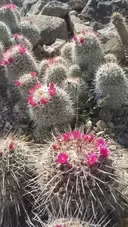 Today marks the beginning of week two of self-isolation for the Tucson YAV house. Last week, because of COVID-19, none of us went to work. We all worked from home as best we can, but for me, it is difficult to do home repairs for others while I staying in my own home. Because I have so much free time these days, my plan for not working was to do some reading, writing, learning new skills, and completing personal tasks that had been put on the back burner for a while. I was ready to have a “productive” week. But what does that even mean? I made a daily schedule. That overwhelmed me. Even though I had at least a week of time to accomplish my list, it felt like too much to get done. Also, what if one or two of the days I was tired and didn’t want to do what I had laid out on my schedule… What if this time didn’t accomplish everything I expected it to? This year has challenged my idea of productivity. I have always thought of a productive day as one where I turn a to-do list into a to-done list. A productive conversation is one where there is a set outcome and action steps decided, right? But that is a version of productivity that doesn’t work for me any more. Honestly, I think the modern American version of “productivity” is fake. As a YAV house, we have weekly community check ins. Sometimes these meetings address specific issues: budgeting, community chores, schedules etc. But other times we take time to have conversations that are really needed, but don’t have a defined out come. We talk about how each of us is doing, how we are feeling about our community, work, and families. Some times there are lots of laughs during this and other times it is more serious. All of this is good. All of this is necessary. All of this is productive. A few weeks ago, while building a ramp one day for a CHRPA client, we sat down for a lunch break. Usually this takes about 30 minutes, but that day, the client’s caregiver struck up a conversation and we sat and talked for close to an hour. He also talked to us as we were working. Sure, this slowed us down, if we were more focused and worked faster, we could have gotten farther along on that days project. But every moment of that day was fruitful. We engaged shared stories and engaged in community building, which is always good. But what about times where there is nothing that gets done. No conversations. No tasks accomplished. Just stillness. My recent experience with that was a desert sojourn retreat. I spent 3 days and 2 nights camping alone in the desert with only a journal and a bible with me to keep my occupied. While I could have read the Bible the whole time or journaled for hours on end, I didn’t. Most of the 54 hours I spent alone, I simply sat and stared. I looked at the world around me. I took moments to just breath. Moments to appreciate how small I am in comparison to the world and to reflect on what my role is in the world. And I read the book of John. But that is all that I did in more than two days time! And it was wonderful! So I am holding on to that now as I launch into week two of not going to work at CHRPA and not being able to leave the house much. I am going to check in with myself to know what I need. To try to get some things done as they can happen, but to also give myself a lot of grace in what is accomplished. And to have time to enjoy stillness and peace around me, even if it is just for a few moments. I’m sure many of you are trying to be “productive” in this strange time too, but I hope that you will also consider what that means and allow yourself grace as well. And try to find some stillness in these crazy times. Stay well friends! At the beginning of March, which in this time of COVID-19 now feels so long ago, my fellow Tucson Borderland YAV’s and I went to Cascabel, where we stayed in the canyon that hosts sojourn experience. These are experiences to be in solitude for an amount of time. We spent our first night together but once we woke up in the morning we headed out to our solo campsites for two nights and three days of solo time before returning to our group for one last night together to celebrate and reflect. There was something unique about our experience, even different from the sojourners who typically come to this canyon for time of solitude. Though we still practiced solitude, this was something we were getting to practice while also in community. This was something I reflected on while in my alone time. As I saw each sunset, I wondered if Laura was enjoying it just as much as I was. As I shivered at night, I wondered if others were also having trouble sleeping through the night. As I drank my coffee, I wondered if Hannah was also enjoying a cup of coffee. As I journaled I wondered if others were processing what they wanted to in this time and space. I wondered if my community was sharing in the same joys of being surrounded by nature, I wondered if they share similar fears of being alone, if something were to happen. I wondered if they felt comforted knowing Alison was bring us water and checking on us by coming to the tree at the base of each of our camps where we’ve tied rags to signal we are ok. I wondered if they also felt empowered by being in nature and being able to have less pressure from the rest of the world, and the ability to only listen to the needs of their body. I ate when I needed to, I used the restroom when I needed to, I rested when I was tired, I returned to my tent when I needed to relief from the sun. 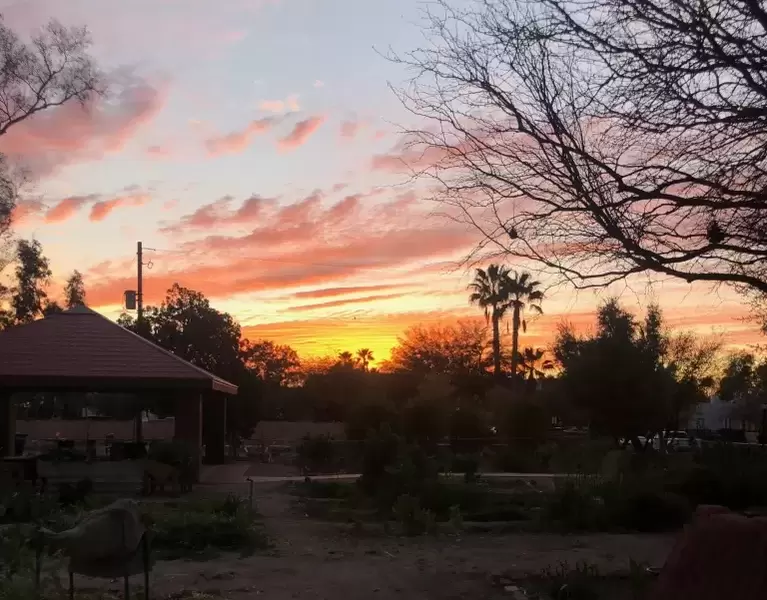 I can’t share the beautiful nature I was surrounded by, during sojourn which included lovely sunsets, but luckily the desert sunsets are regularly this breathtaking. This is one of the many sunsets I’ve been enjoying as we shelter-at-home I can’t share the beautiful nature I was surrounded by, during sojourn which included lovely sunsets, but luckily the desert sunsets are regularly this breathtaking. This is one of the many sunsets I’ve been enjoying as we shelter-at-home There were other powerful experiences during my solo time I could reflect on or share, but in three weeks time a lot has changed, as the world faces this global health crisis. But this experience of solitude in community, continues to resonate with me, as my YAV house, the YAV program, the city of Tucson, Pima County, the state of Arizona, the United States, and countries across the globe are experiencing this crisis, and members of all these communities are also being asked to isolate themselves from one another to keep each other safe. We are isolating as a community and for the community.
Though at this time it’s been easy to feel isolated and alone, I’ve found comfort in the ability to creatively feel connected and in community. As I talk to my parents and friends, I hear the different fears and anxieties we share. As I watch musicians perform instagram live stream concerts, I see many other fans tuning in, showing me there’s many other people like me wanting to connect with music during this time. I feel a lot of comfort being part of a program, with a site coordinator and board checking in with us and offering support as we navigate and process this, in the middle of our YAV year. As a house, we have made jokes that our sojourn retreat has prepared us to sit around and do nothing. But really, at least for me our time at our sojourn retreat has given me ways to reflect and see the beauty of community that is not always visible or means being in physical presence or constant communication, rather the beauty in community is even in complete solitude or mandated orders to shelter in place, it’s presence continues to be powerful and felt. Also always wash your hands. Abi and I walked into a local family owned plumbing store in town. Compared to Naughton’s and Home Depot this store is tiny, instead of roaming through the aisles to find plumbing parts, you walk up to the counter and ask Bruce for what you need. He brings it right to you. There is free cold water to make sure plumbers are staying hydrated. Abi and I walked into Bonnets, Stems, and Accessories to find a Price Pfister shower valve, we were excited to walk in, knowing the service would be so friendly and the store would more likely have the part we needed that is harder to find at other stores. A man walked into this same plumbing store and was not expecting to see two females in this plumbing small store. Once again unlike Naughton’s or Home Depot we were in close proximity he didn’t see us walking down the aisle where he could, just quietly wonder what we were trying to find at Home Depot, keeping his comments to himself. A man walked into this small store and before the door even closed Abi and I hear this man ask “are y’all female plumbers.. I didn’t know there were female plumbers?” We had just told Bruce what we needed and he had turned to look at his stock, but as soon as he heard this man’s comment he turned back around and let this man know, actually there are quite a bit of female plumbers. In fact Bruce’s mom has been in construction since the 80’s here and has had to have “bigger balls” than all the men in this field. Bruce told him that men learned quickly to be “more afraid of her than an 80 pound bulldog,” she meant business and knew what she was doing. This man of course was shocked to hear that women were in this field, but he figured out it did make sense that women could do plumbing now, after all technology and tools have really developed to make it easy enough now for women to do plumbing. This has been the most direct comment from a man I’ve heard in my six months in this male dominated field of home repair and construction, questioning the ability of females to do the same work he does, just as well as he can. Many people seem shocked to see that women are in this field. Some comments men make are more subtle when they are curious about women in this field. We have many questions about whether or not we are the crew that will do the work, or if we are just the assessors. We are often asked if we need help loading lumber onto our rack when we have five boards left after already loading our first twenty boards on our own. These comments don’t always sound like they are questioning our ability to do these things on our own, but also when I’m paired with male staff, I don’t receive these same questions. I am just left to wonder what assumptions or expectations are being made by men about me in this field. 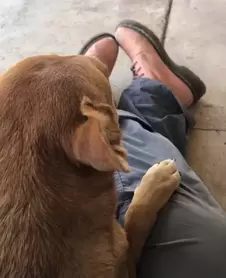 My pink boots and pups are the best part of the job My pink boots and pups are the best part of the job Despite these comments in only six months I’ve started to gain confidence in my abilities, I’ve installed a handful of furnaces and water heaters, I have helped build the longest ramp that CHRPA has built, I’ve installed many kitchen and lav faucets and re-plumbed leaking water lines. I’ve learned how to use the many tools that do in fact make the job easier; I’ve learned how to use pipe wrenches, snakes, a rehau and wirsbo, and how to solder. These make it easy to make connections in water lines, and be able to do work faster. I love working in a field that hasn’t traditionally been male dominated. I love getting to use power tools that make me feel empowered. I love working with other women in the field. I love wearing my pink work boots that make me feel like I can express my gender and the pride I have in being a woman. I love when female clients we work for are comforted by the fact that women are coming into their homes to help them. I love that female clients think we’re badass and rooting us on when we’re working. The smallest moments with female clients are truly special, they remind me of the many other times in my life I have felt surrounded by sisterhood. The community I have found with women in my life has been incredibly healing and powerful in not allowing me to feel alone. The comments and feeling uncomfortable with some of the men I interact with in this field still at times is something I continue to struggle with, but finding community with women within my work brings me joy, and the desire to continue to use my strengths and abilities as a women. |
Archives
November 2023
Categories
All
|
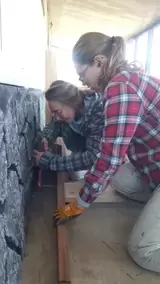
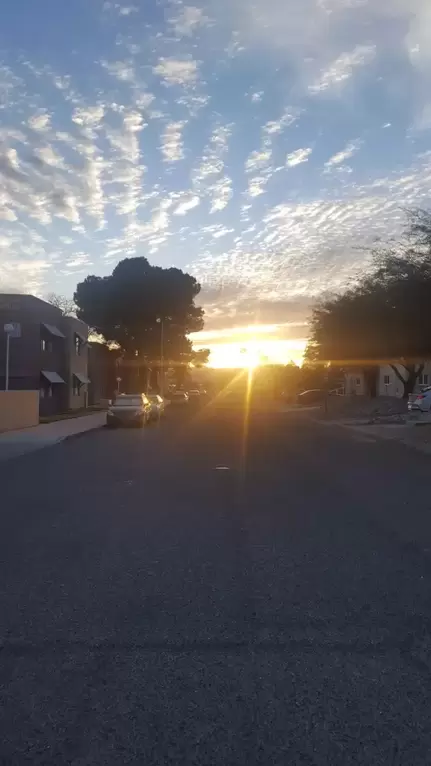
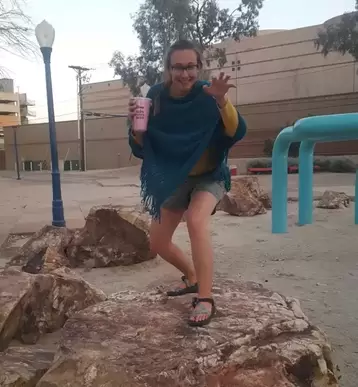
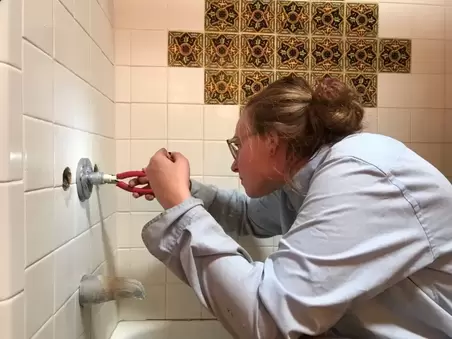
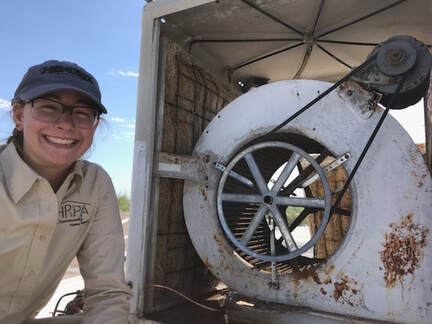
 RSS Feed
RSS Feed
